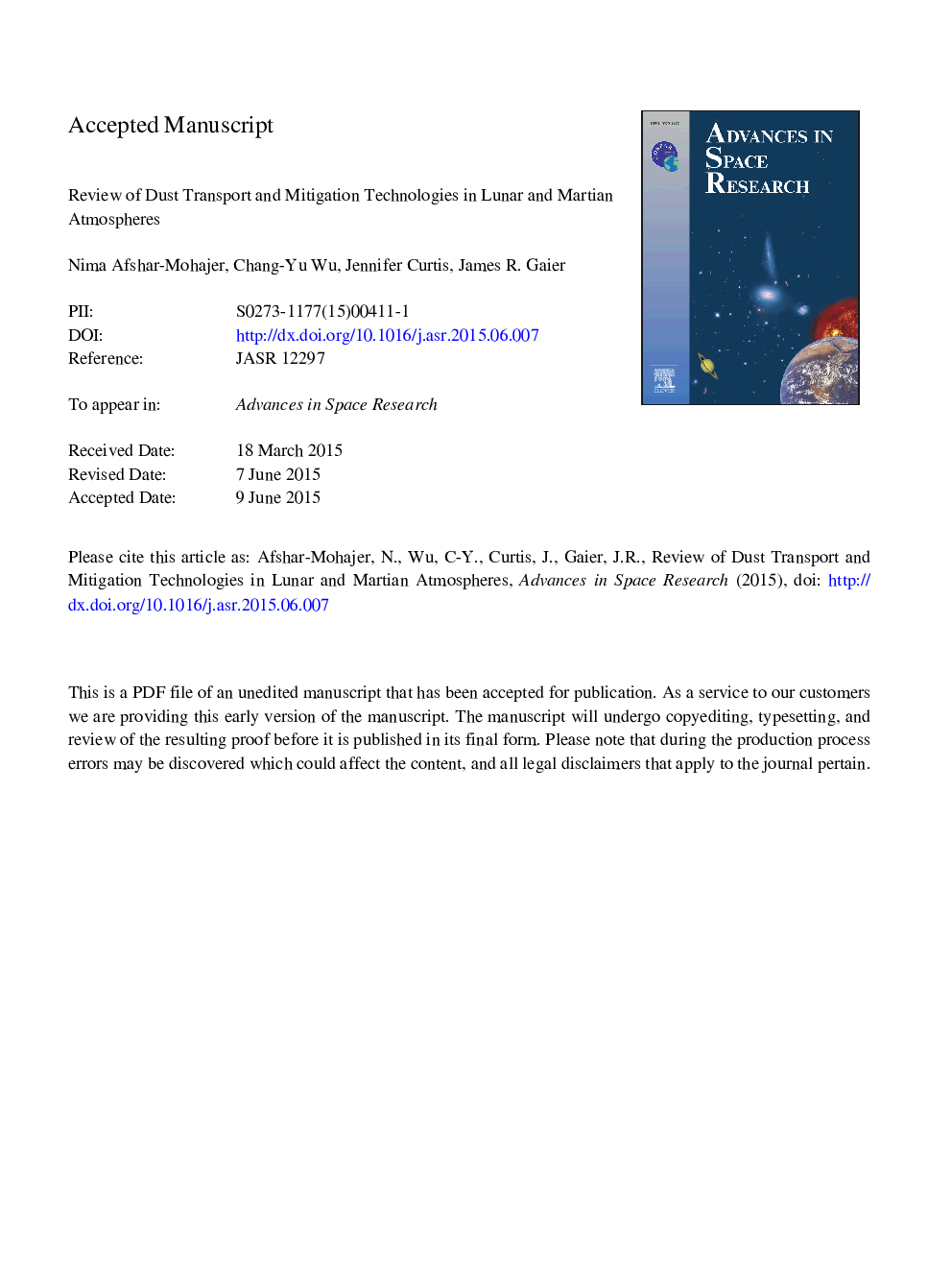| Article ID | Journal | Published Year | Pages | File Type |
|---|---|---|---|---|
| 10694217 | Advances in Space Research | 2015 | 72 Pages |
Abstract
Dust resuspension and deposition is a ubiquitous phenomenon in all lunar and Martian missions. The near-term plans to return to the Moon as a stepping stone to further exploration of Mars and beyond bring scientists' attention to development and evaluation of lunar and Martian dust mitigation technologies. In this paper, different lunar and Martian dust transport mechanisms are presented, followed by a review of previously developed dust mitigation technologies including fluidal, mechanical, electrical and passive self-cleaning methods for lunar/Martian installed surfaces along with filtration for dust control inside cabins. Key factors in choosing the most effective dust mitigation technology are recognized to be the dust transport mechanism, energy consumption, environment, type of surface materials, area of the surface and surface functionality. While electrical methods operating at higher voltages are identified to be suitable for small but light sensitive surfaces, pre-treatment of the surface is effective for cleaning thermal control surfaces, and mechanical methods are appropriate for surfaces with no concerns of light blockage, surface abrasion and 100% cleaning efficiency. Findings from this paper can help choose proper surface protection/cleaning for future space explorations. Hybrid techniques combining the advantages of different methods are recommended.
Related Topics
Physical Sciences and Engineering
Earth and Planetary Sciences
Space and Planetary Science
Authors
Nima Afshar-Mohajer, Chang-Yu Wu, Jennifer Sinclair Curtis, James R. Gaier,
